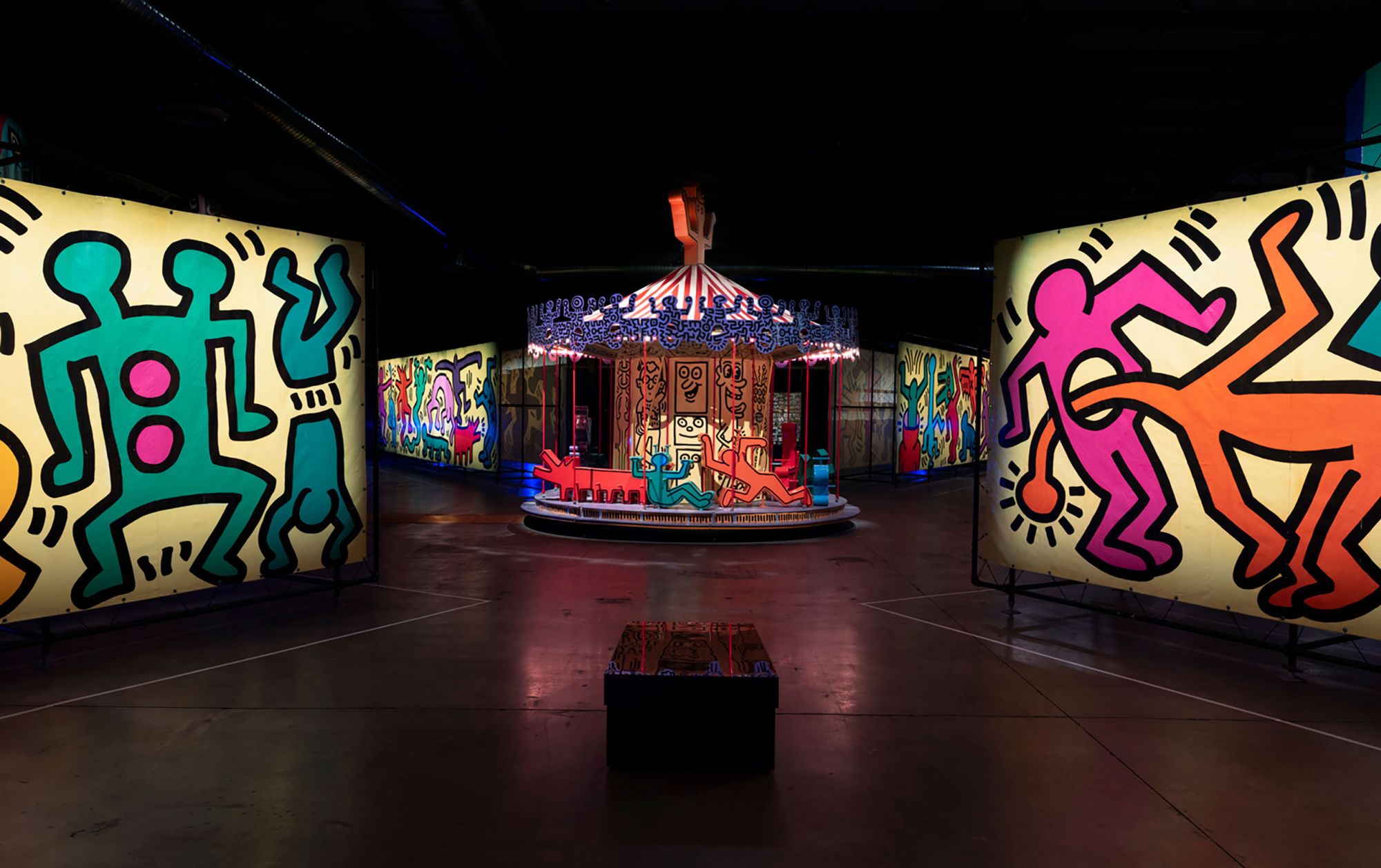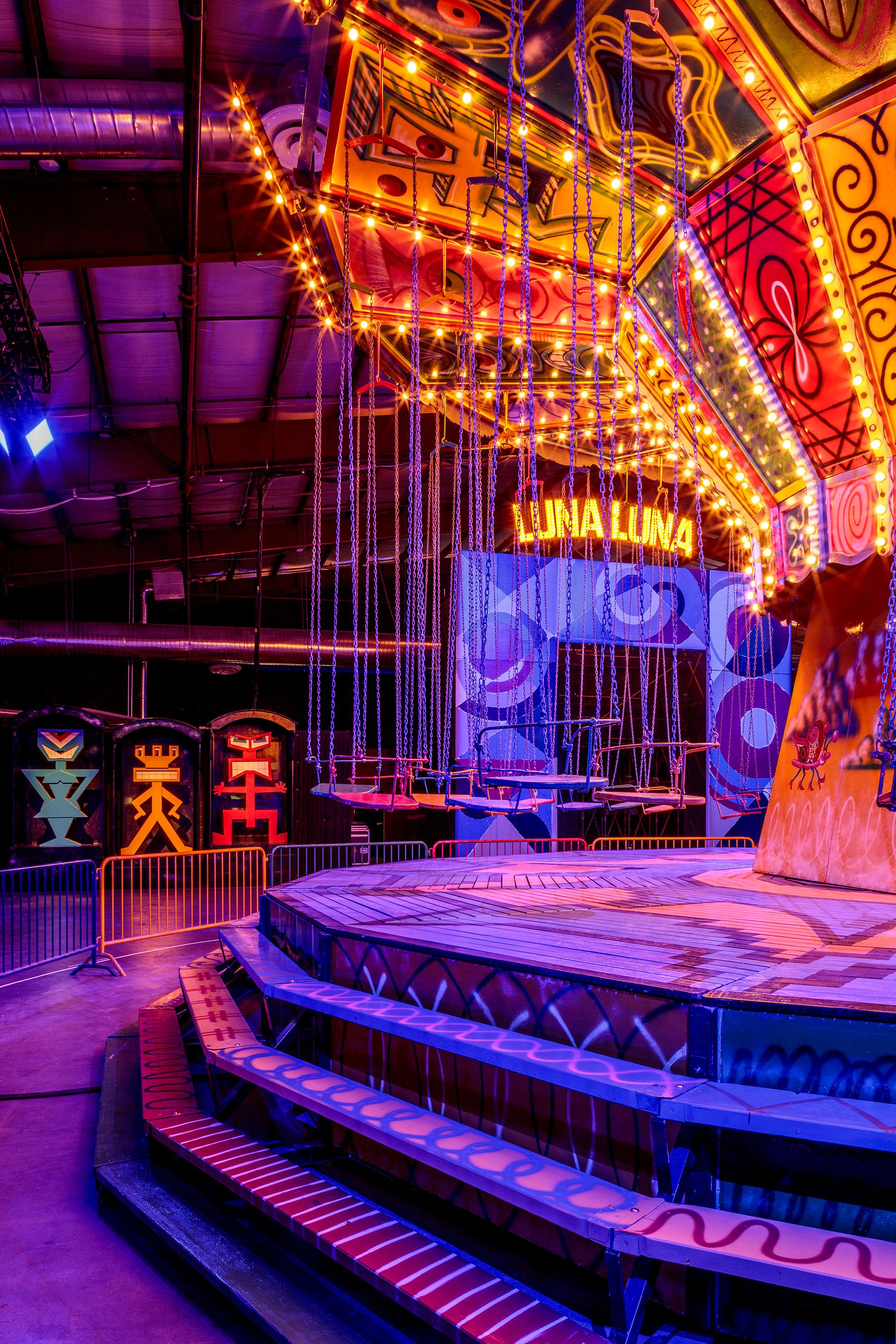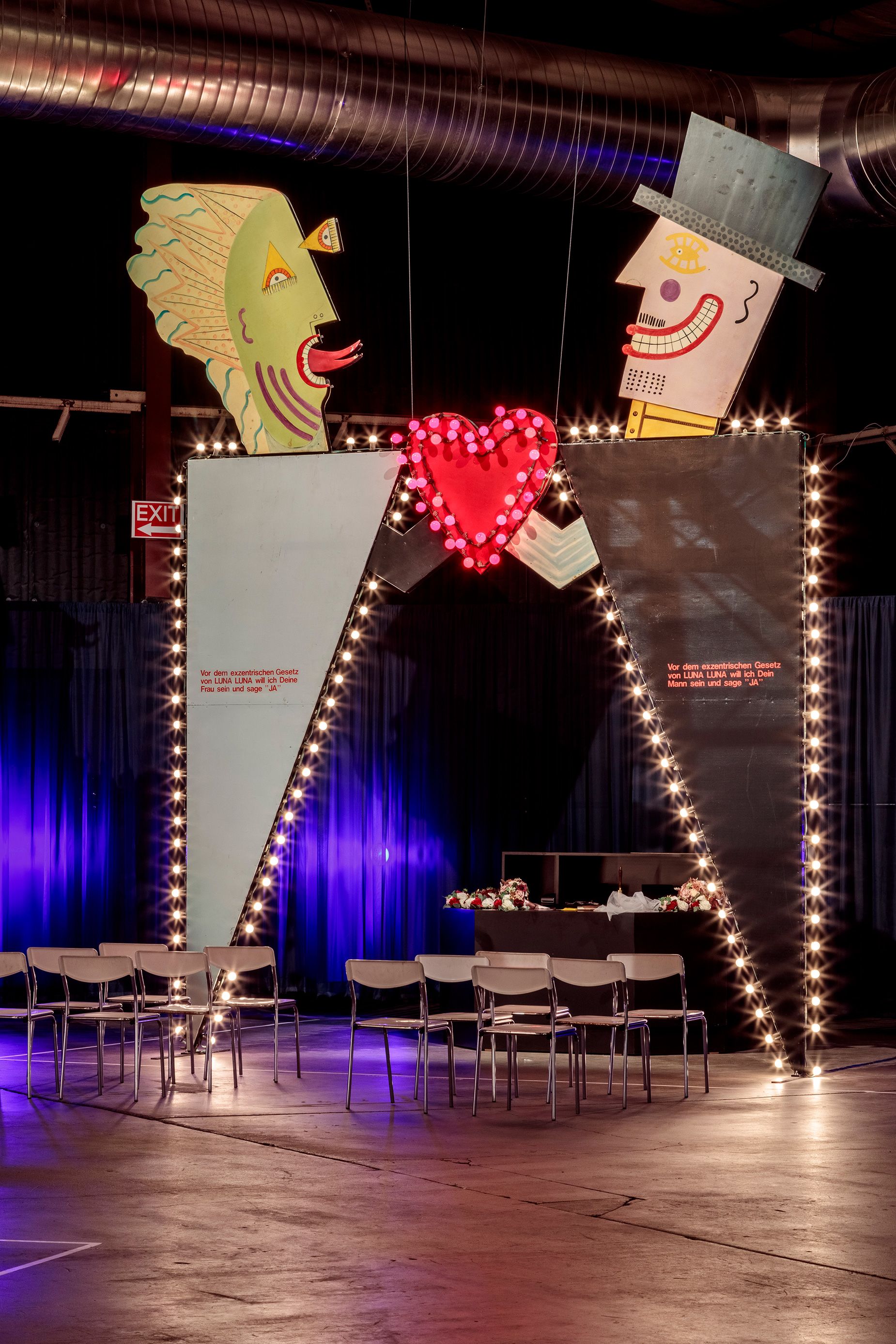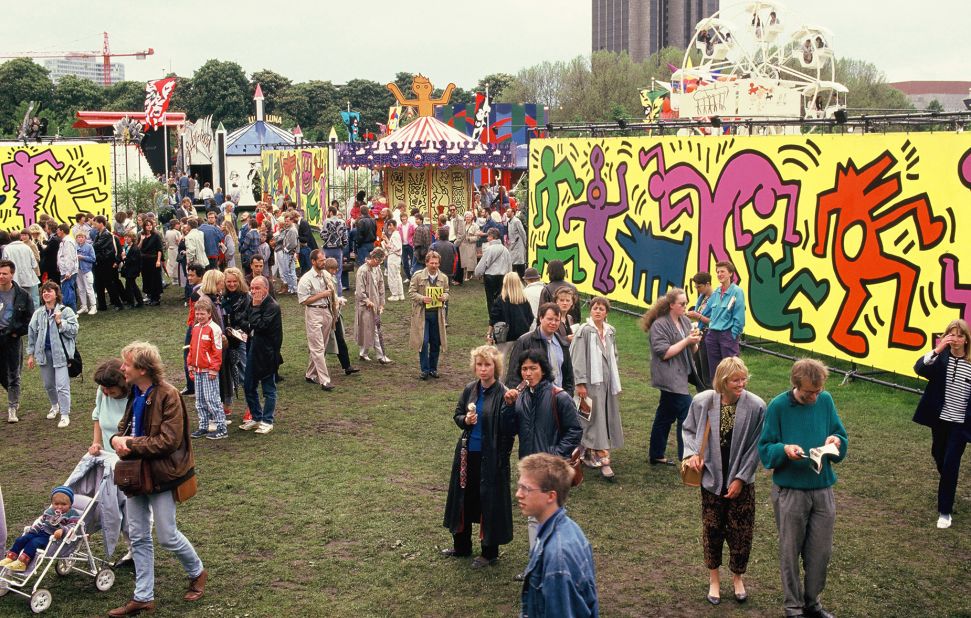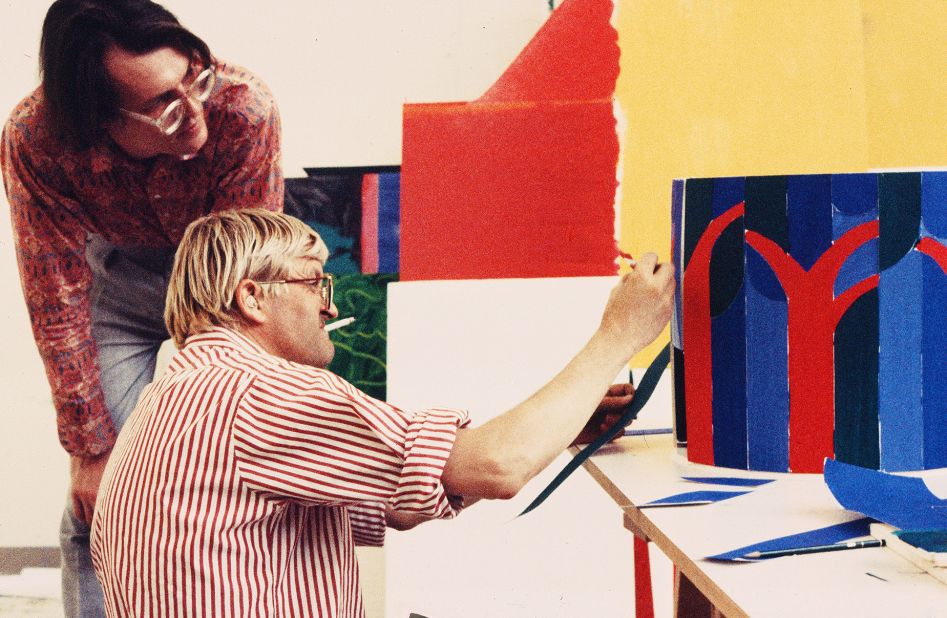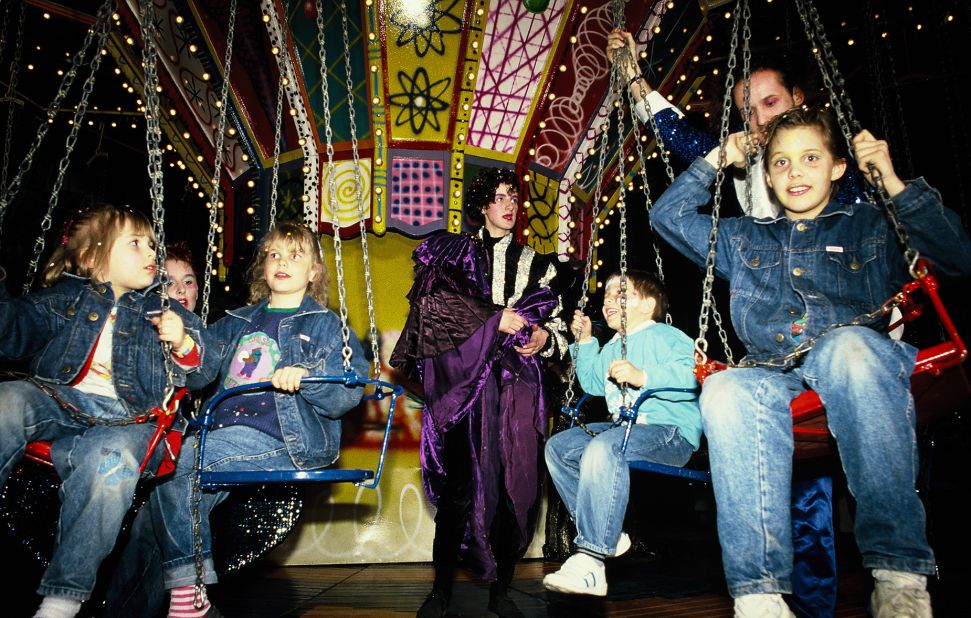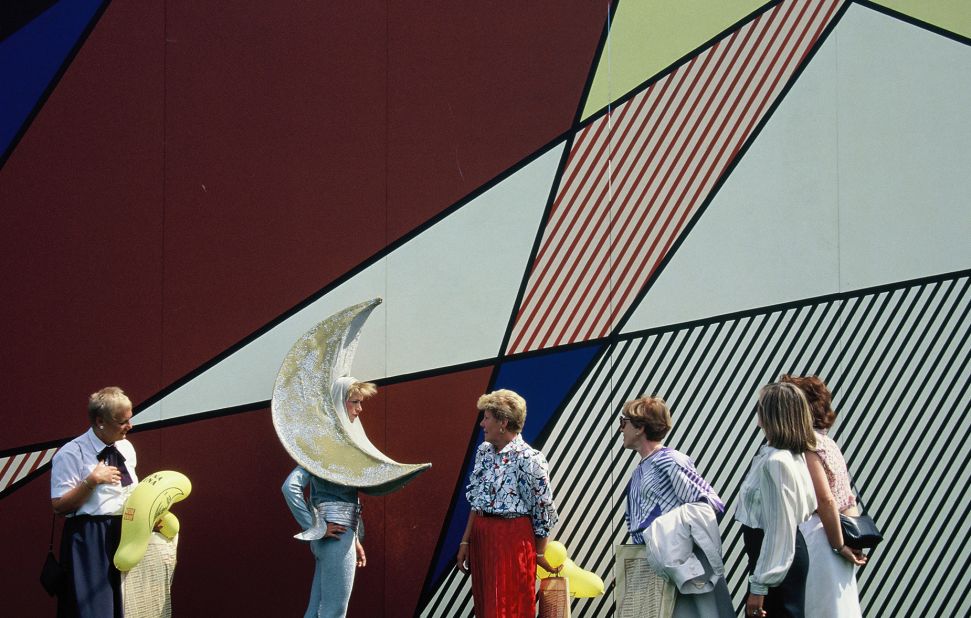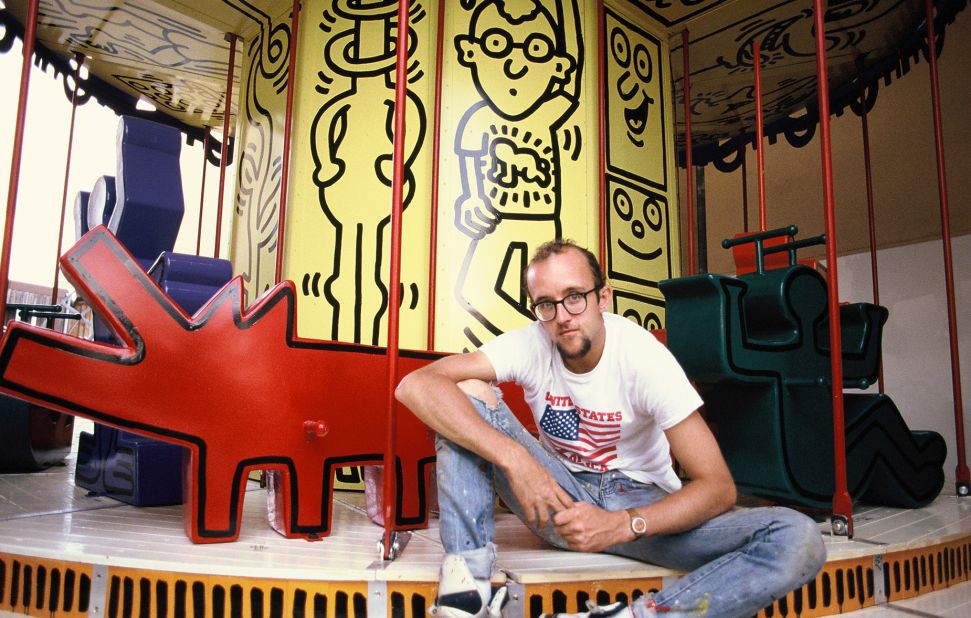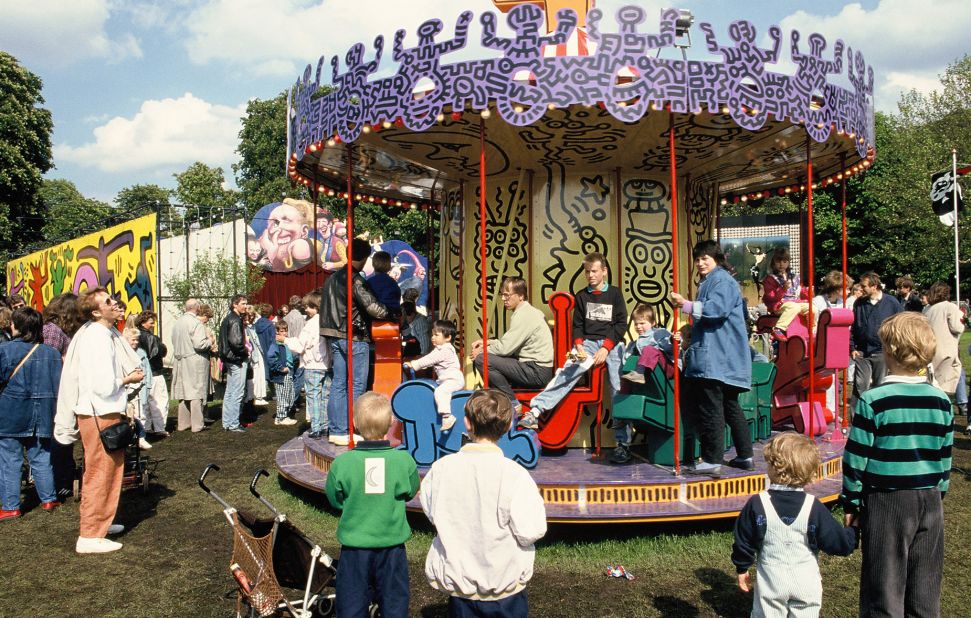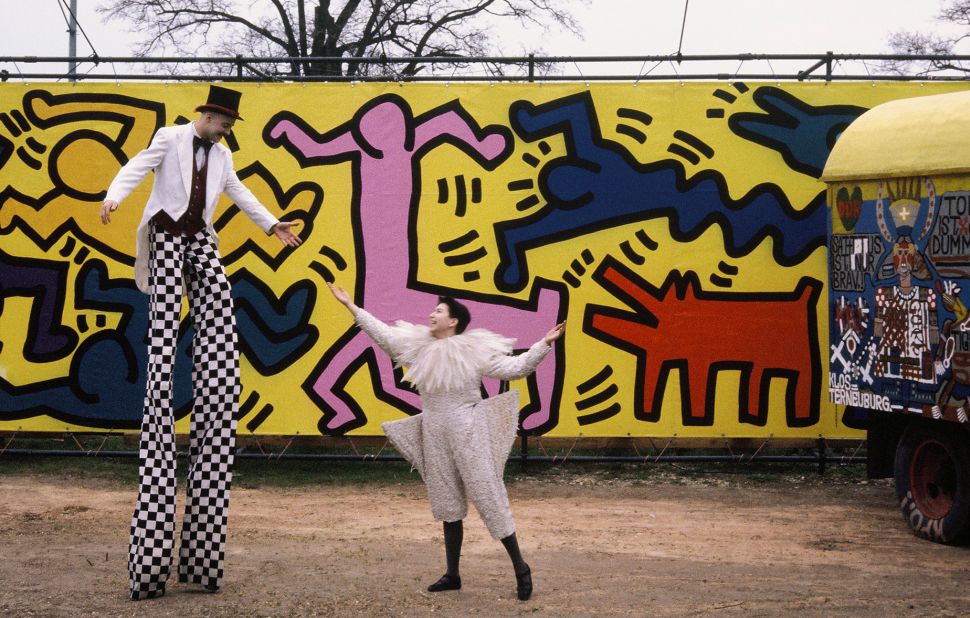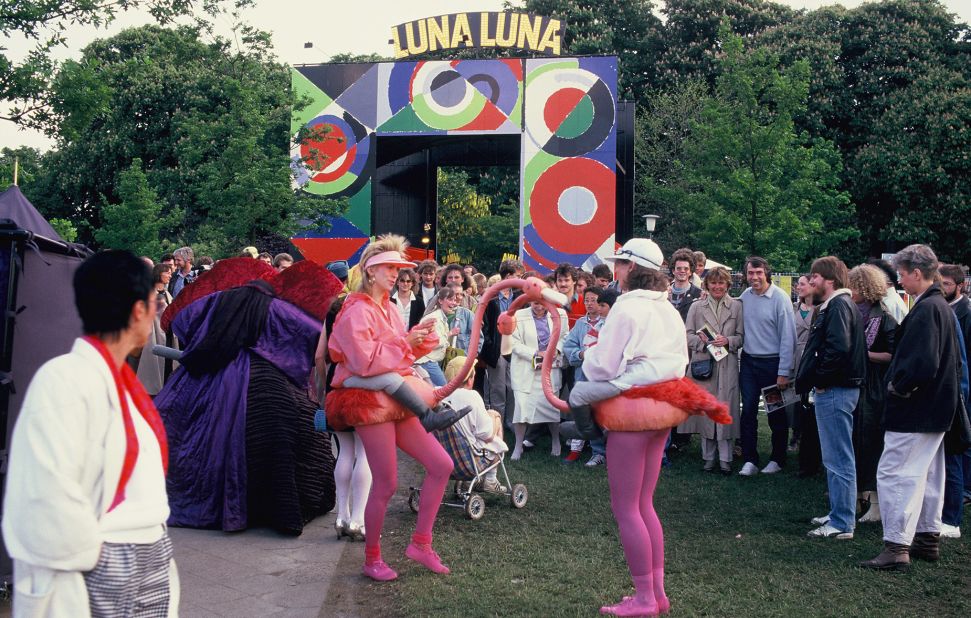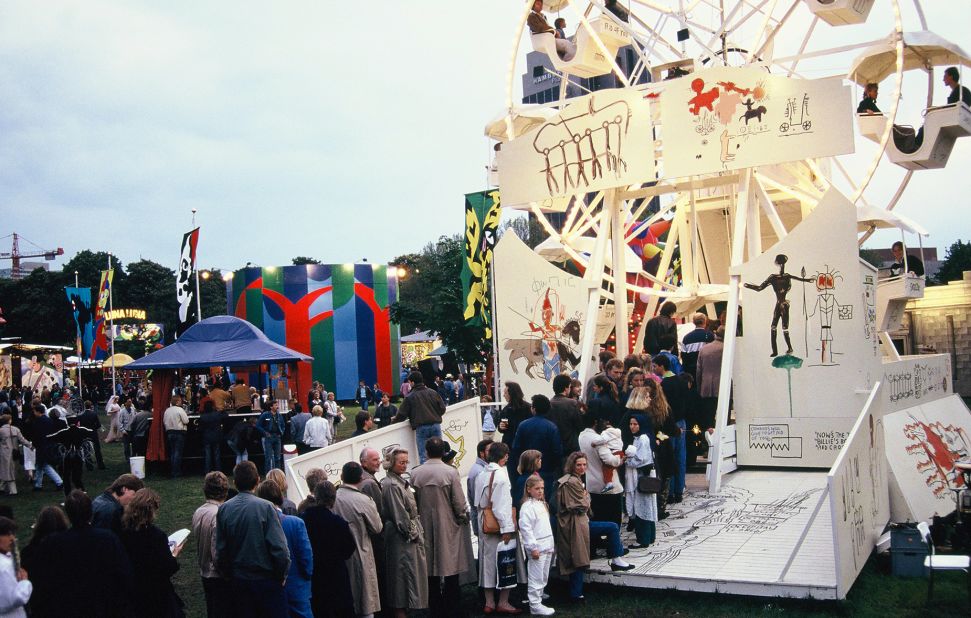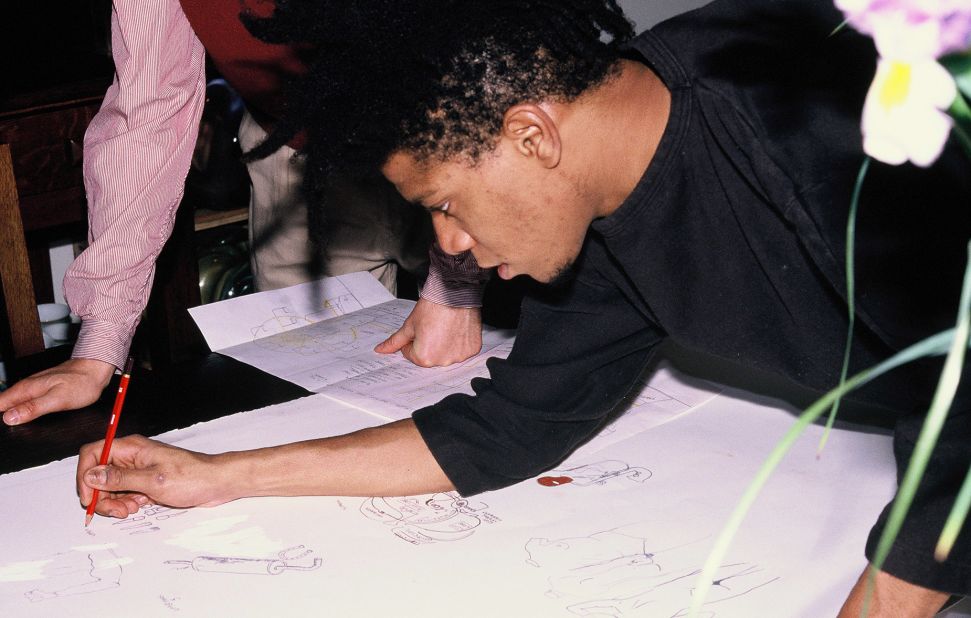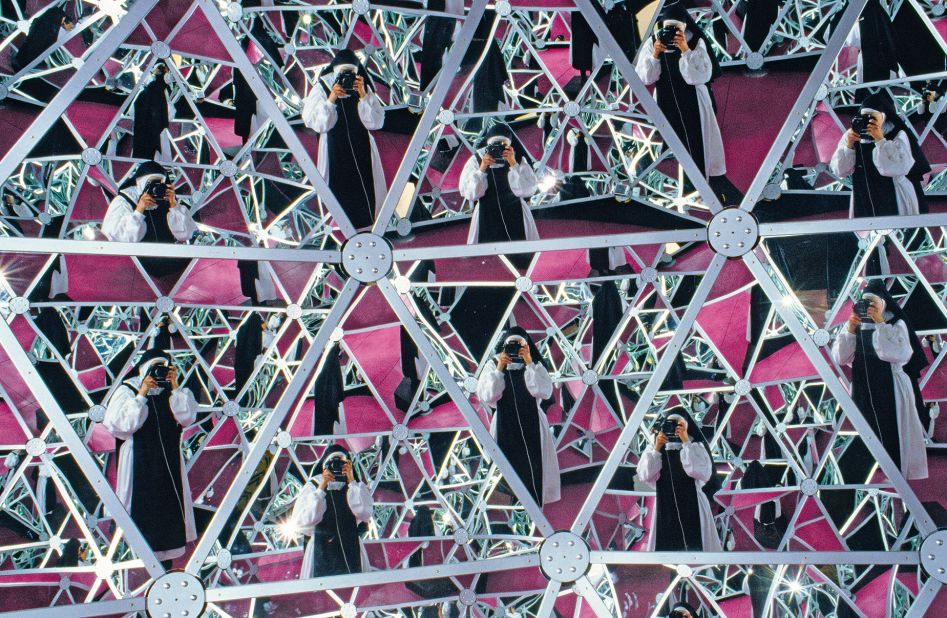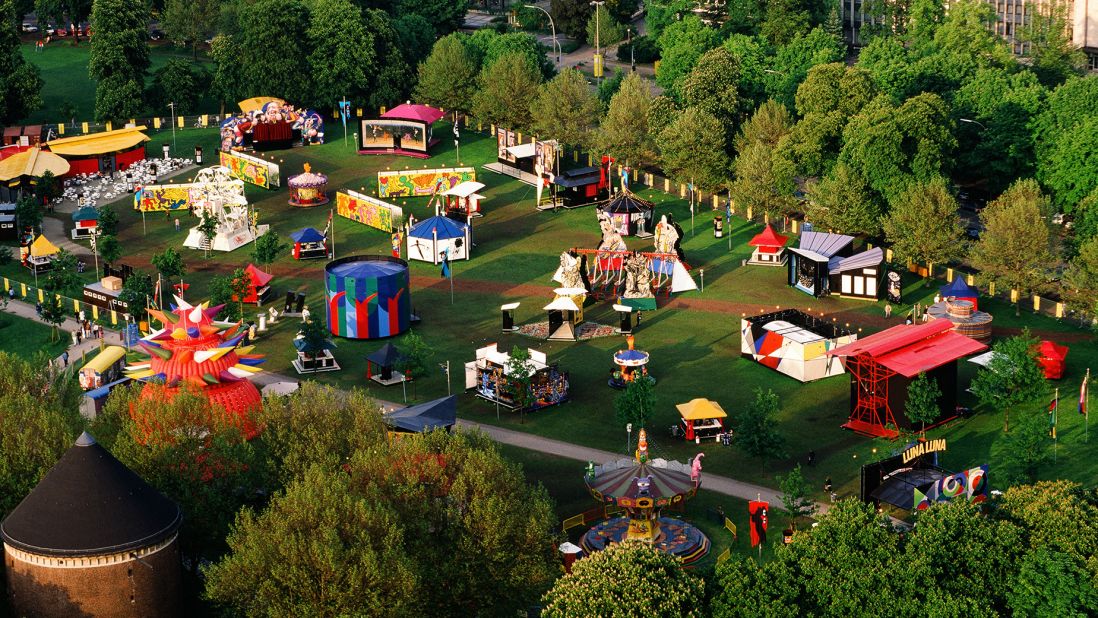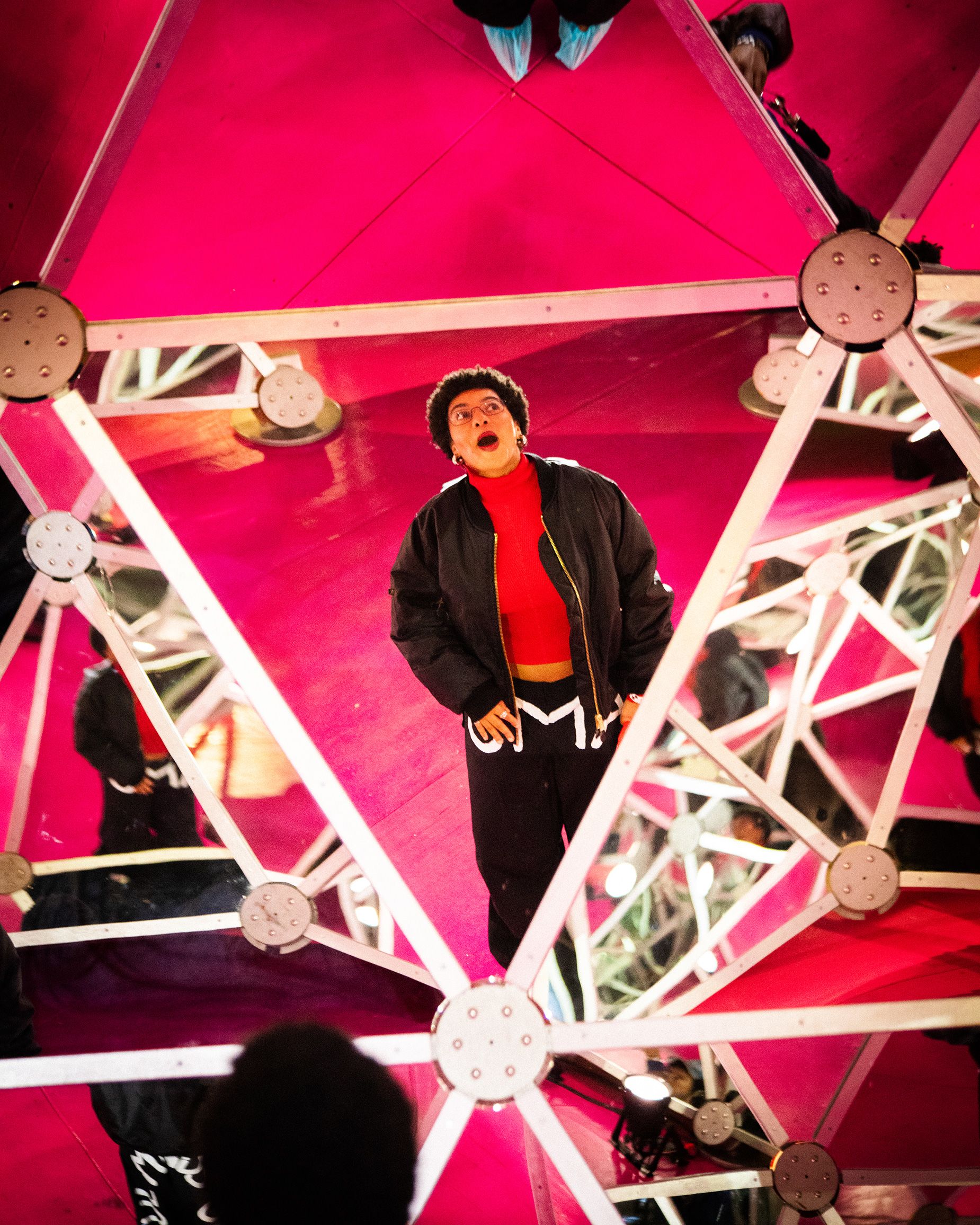A time capsule is often a small cache of significant items representing a particular moment in history — newspaper clippings, photographs, memorabilia and other cultural artifacts. But in early 2022, a different kind of capsule (and certainly one much larger than usual) was unearthed, after being hidden away for over three decades inside 44 shipping containers, most recently in the small town of Nocona, Texas. Its contents? An entire amusement park.
Luna Luna, an “art amusement park” that once operated in the 1980s with rides and attractions designed by legendary artists such as Jean-Michel Basquiat, Salvador Dalí, Keith Haring and Sonia Delaunay, is now on view for the first time in 36 years. The immersive installation experience, titled Luna Luna: Forgotten Fantasy, opened last Friday in Los Angeles.
Upon entering the sprawling, 60,000-square-foot warehouse space in which Luna Luna is now housed, park-goers are instantly transported back to when many of the artists whose creations it features were at the peak of their fame: Keith Haring’s vivid line drawings surround his hand-painted carousel; David Hockney’s cylindrical “Enchanted Tree” feels like a prop straight out of a Disney movie. Stilt walkers, costumed characters and puppeteers from the Bob Baker Marionette Theater, LA’s longtime children’s theater company, meander around in homage to the jugglers, plate spinners, mimes, and other theatrical performers who contributed to the spectacle in its original iteration.
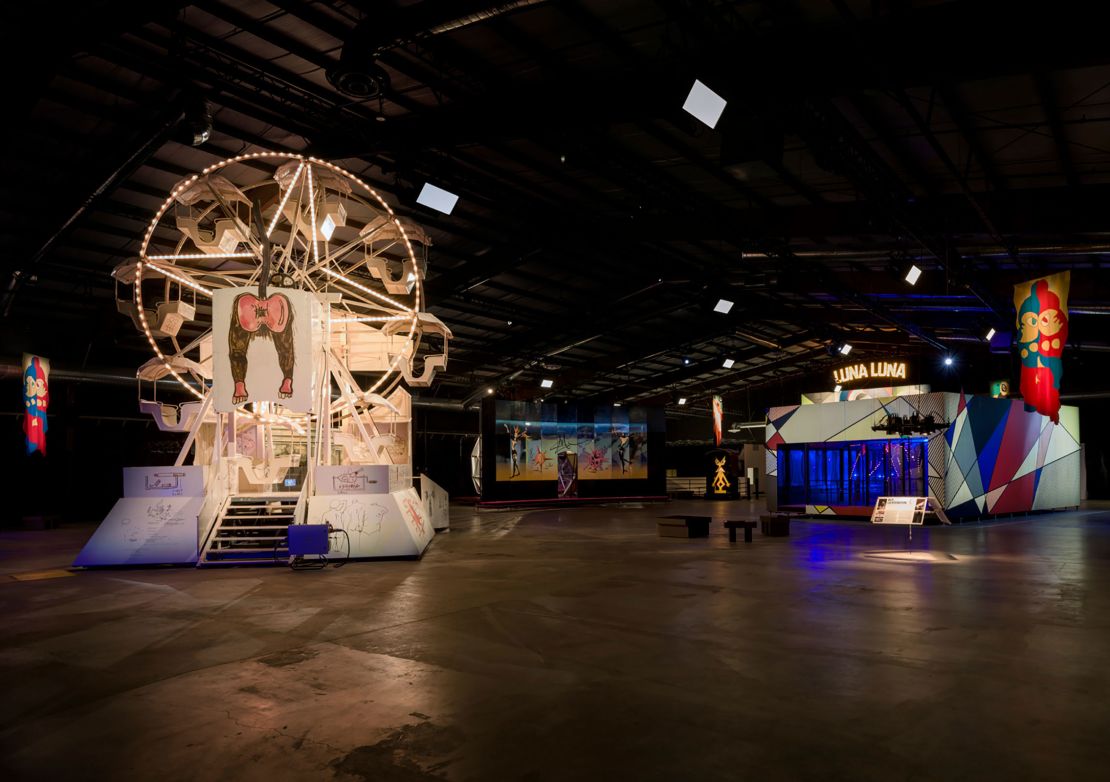
The park, which originally opened in Hamburg, Germany, in the summer of 1987, was the brainchild of Austrian artist, author and pop star André Heller. More than a decade earlier, Heller began envisioning Luna Luna, inspired by the Prater amusement park in his childhood home, Vienna. His goal was to create a world in which art could be accessible — and engaging — to all; in a 2022 interview with the New York Times, Heller said he had hoped to “build a big bridge between the so-called avant-garde — the artists who were a little snobbish sometimes and didn’t connect with the masses — and the so-called normal people.”
And after reportedly securing a six-figure grant from the German magazine Neue Revue, Heller traveled the world to persuade more than 30 of the era’s most renowned creatives — a list that also included Ingmar Bergman and Henry Miller — to contribute to Luna Luna.
In photos: André Heller's "art amusement park" Luna Luna
“The reason why all these important artists participated for so little money was because I told them, ‘Listen, you are constantly getting the greatest commissions; everyone wants your paintings or sculpture, but I am inviting you to take a trip back to your own childhood,” he told curator Dieter Buchhart in 2016. “Really without exception everyone answered by saying, sure, that‘s a nice, pleasant challenge.”
Basquiat contributed designs (that bore reference to his earlier works, such as anatomical drawings) that were painted onto a white Ferris wheel — which featured a massive rendering of a baboon’s butt in its center. Dalí built Dalídom, a pavilion containing a mirrored geodesic funhouse that was a continuation of the surrealist funhouse he created for the 1939 New York World’s Fair.
Kenny Scharf made a rainbow-hued chair swing ride topped with cartoonish figures, Monika Gilsing designed flags adorned with her “Wind Images” and in one of the odder exhibits, “Palace of the Winds,” Heller collaborated with the artist Walter Navratil on a piece featuring performers farting into microphones while an orchestra played classical music.
A world’s fairground
Heller had grand plans: Before being permanently installed in Vienna, Luna Luna was supposed to embark from Hamburg on a world tour. Its second stop was intended to be in San Diego, California, but legal troubles complicated — and eventually scuppered — its Stateside debut as planned. Heller fell into debt, and the Stephen and Mary Birch Foundation, a philanthropic organization, agreed to purchase the park. Disagreements over charging admission and other issues caused the foundation to pull out of the deal, however, spawning years of lawsuits and litigation. Luna Luna was shut down and stored away, largely forgotten. (But not by Heller himself, who described his unfulfilled fascination with Luna Luna to the Times as “like a love affair where you can’t stop having erotic dreams.”)
In 2019, creative director Michael Goldberg stumbled upon Luna Luna’s lore online. “I fell in love instantly,” he told CNN during a tour of “Luna Luna: Forgotten Fantasy.” “Seeing so many different artists — so many different art movements, artists at different stages of their career — come together to create something that I found so compelling.” He approached Heller, who, in a serendipitous twist, had already been discussing ways to bring Luna Luna back with Daniel McClean, an international art attorney. Goldberg then brought the idea to DreamCrew, the arts and entertainment firm co-founded by the rapper Drake, and his manager Adel Nur. DreamCrew purchased the entirety of Luna Luna for an undisclosed sum from the Stephen and Mary Birch Foundation.
In January 2022, the shipping crates were opened, allowing the decades-old works to finally see the light of day again. But after some 35 years in storage, the attractions were no longer functional, though some of the original motors still worked. (In Luna Luna’s current form, visitors can step inside some of the installations, but the rides are not approved for human use.) “There was no template for the restoration,” Lumi Tan, the project’s curatorial director, explained. “Because these works were created to be interactive, our conservation approach aims to reflect their use by almost 300,000 visitors in 1987, rather than restoring them to how they looked before the park’s opening.”
This project is ongoing; while 16 of the works are on view at “Luna Luna: Forgotten Fantasy,” including the works by Basquiat, Haring, and Dalí, others are still being restored.
Aside from participating in the original attractions, visitors can view a photo archive of the park’s original development, and learn about how it was unearthed and restored. Archival merchandise from the original Luna Luna (including t-shirts and posters designed by Haring, Hockney and the pop artist Roy Lichtenstein) is being sold alongside items newly-designed for the exhibition.
“We honestly couldn’t have imagined such an incredible response,” Goldberg told CNN in an email of the installation’s opening weekend. “Seeing young families, friend groups, couples on dates, tourists, seniors, and everyone in between line up before our doors open and then leave hours later, smiling ear-to-ear, has been really moving for the whole team.”
Luna Luna: Forgotten Fantasy will be on display through the spring of 2024. However, LA may just be the beginning, with the park’s new owners planning to modern-day artists to contribute new and fully-operational attractions for a global tour in the spirit of Heller’s original vision. (Heller is no longer involved in the revival himself, however, after he admitted last year to the Austrian magazine Falter that he had been involved in the sale of a frame falsely attributed to Basquiat as a “prank.”)
Ultimately, Goldberg said, the new exhibition invokes the spirit of the original by working to reach both those who appreciate art and people who don’t know anything about it. “Luna Luna is something that can either inspire you to go down the path of doing something creative or it can reconnect you to it,” he explained. “It’s really just meant to spark joy and create emotion for people.”
